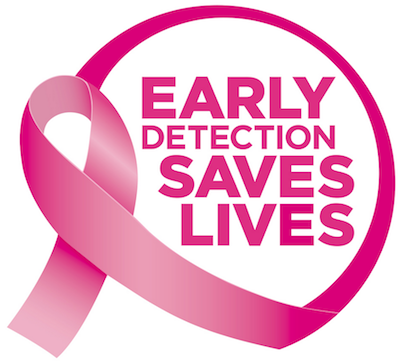Breast Cancer Who does it affect?
Breast cancer awareness has become very important in our world today. In the United States of America, this year alone, over 300,000 women will be diagnosed with breast cancer – more than 43,000 will die. This means that one in every eight women will develop or already has breast cancer. One in eight! Men do not escape some risk either. Some 1,900 men will be diagnosed this year as well. And twenty-five percent of those will die. Make no mistake; breast cancer is a real threat.
Early Detection
There is plenty of reason for hope, despite the frightening statistics already cited. Over 95% of those who are diagnosed with breast cancer live at least five years – if their cancer is detected early. This means it is incredibly important to perform self-tests and have regular mammograms! Every single breast cancer awareness resource states unequivocally that Mammograms are one of the best early detection methods available – but some thirteen million American women over the age of forty have never had one. Remember: knowledge truly is half the battle.
Who’s at Risk?
Fortunately, breast cancer awareness has become more prevalent in our society. While we still don’t know exactly what causes cancer, we can, statistically, identify some risk factors to determine where breast cancer is most likely to occur.
Gender: In this case, cancer is not an equal opportunity occurrence. Women run the highest risk of having breast cancer. This is primarily due to the fact that female breast tissue is constantly influenced by estrogen and progesterone. Women run about 100 times more risk for breast cancer than men.
Age: Age increases risk as well. Statistics show that 17% of those diagnosed with invasive breast cancer are women over age 40, while 78% are 50 or older when diagnosed.
Genetics: Medical research suggests that 5 – 10% of those diagnosed with breast cancer are hereditary. Usually this is due to inheriting a mutated BRCA1 or BRCA2 gene. When those genes are normal, they contribute to the process of a cell creating certain proteins that maintain normal cell growth.
Family History: The risk of developing breast cancer is higher in families where two or more relatives have already been diagnosed with it, or where it has occurred in a member of the family before 50 years of age. Having a relative with two different kinds of cancer, or a having a male relative with breast cancer, is also a sign of increased risk. The increased level of breast cancer awareness in the past century have also provided research that indicate a family with a history of breast or ovarian cancer and Ashkenazi Jewish heritage is at greater risk, as is a family with a history of diseases related to breast cancer, such as Li-Fraumeni or Cowden Syndrome. It is estimated that about 20 – 30% of women with breast cancer have a family member with this disease.
Your History: Having cancer in one breast multiplies the risk of developing it in the other breast (or in a different part of the same breast) by three or four. This is independent of any recurrence of the original cancer.
Race: Caucasians are more likely to develop breast cancer than African-Americans; however, African-Americans are more likely to die from their cancer. Scientists believe this is due to the tendency of African-Americans to develop more aggressive tumors. Asians, Hispanic, and Native-Americans all have less risk of developing breast cancer, as well as dying from it.
Other Risk Factors: There are other factors that can increase the risk of breast cancer as well. These include (but are not limited to):
- Women who started menstruating before age 12 or did not enter menopause until after age 55
- Individuals who had radiation treatment for another cancer during their youth
- Women who took Diethylstilbestrol in the 1940s to the 1960s
- Women who have not had children before age 30 (Statistics show that fewer women who had multiple children or had children at a young age have a reduced risk of breast cancer.)
- Women who used oral contraceptives within the last 10 years
- Women who undergo long-term Postmenopausal hormone therapy (or HRT)
Treatment
Fortunately, society’s increased level of breast cancer awareness has fueled an advance of medicine in that field. However, the single most important factor in treatment is still early detection – the importance of self-checks and regular mammograms cannot be overstated. Once the cancer is detected, there are currently several methods of treatment available.
Surgery is the most common method. Preferred surgical techniques involve removing the tumor while preserving the breast. In some cases, however, a mastectomy is the only choice.
Radiation Therapy is another alternative that involves dosing the cancer with radiation in an effort to kill it. This is done either by projecting radiation into the cancer-infected portion of the body, or by injecting radioactive material into, or near to, the cancer.
Chemotherapy is similar to radiation therapy, except that drugs are used to try and kill the cancer instead of radiation.
Hormone Therapy is the process of using a treatment that prevents the body from producing hormones that can fuel cancer growth and development.
In addition, there are new treatments in development. Cancer patients should educated themselves regarding these alternatives and speak to the doctor about the possibility of participating in the clinical trials of these cutting edge treatments.

No Comments